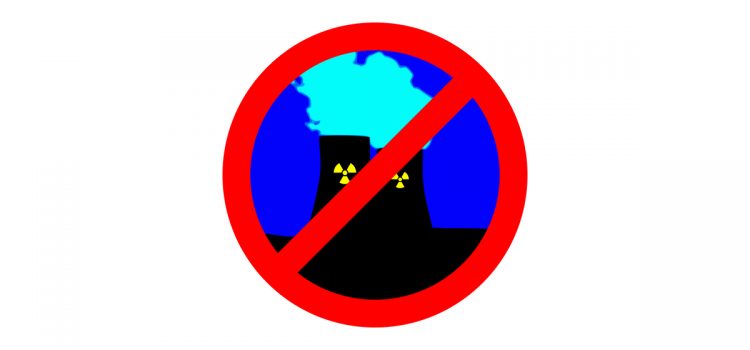

This article is an excerpt from the Shortform book guide to "Apocalypse Never" by Michael Shellenberger. Shortform has the world's best summaries and analyses of books you should be reading.
Like this article? Sign up for a free trial here.
How connected are nuclear energy and nuclear weapons? Does nuclear power imply nuclear fallout?
Award-winning science writer Michael Shellenberger says that nuclear power is the best way to meet rising energy demands. However, it’s hard to convince people of that because anti-nuclear propaganda has drastically clouded public opinion on the topic.
Read more to learn how and why the anti-nuclear movement hijacked the narrative.
The Anti-Nuclear Movement
Environmentalists haven’t always been against nuclear power. In the 1960s, it was seen as the obvious way to meet rising energy demands while preserving natural areas. Shellenberger writes that the shift began when some environmentalists deliberately conflated nuclear power with nuclear fallout to stop plants from being built on lands they wanted to conserve. This led activists who were against nuclear weapons to split their focus to include nuclear power. The idea that nuclear energy was as dangerous as nuclear fallout went viral among environmental groups in the 1970s. By now, it’s been infused into environmental doctrine because of the efforts of the anti-nuclear movement.
(Shortform note: The tendency to lump nuclear energy with nuclear weapons continues to this day. The Campaign for Nuclear Disarmament claims that there are secret connections between the commercial nuclear power industry and government military programs. However, while nuclear power is a dual-use technology that can both provide clean energy and produce fuel for weapons, in practice there has been no strong correlation between the presence of nuclear power plants and a country’s capability to create atomic weapons.)
The film and television industry has also played an important role in turning nuclear power into a boogeyman, with exploitative and inaccurate depictions that drum up the “scare factor” of nuclear energy. However, Shellenberger admits that the nuclear industry did itself no favors by retreating from the public debate and letting the media’s misinformation go unchallenged. As a result, most of the world is phasing out nuclear power.
(Shortform note: Drumming up the “scare factor” isn’t exclusive to nuclear energy. In Bad Science, Ben Goldacre highlights the ways that journalists distort scientific and technological claims in order to generate headlines. Scientific progress is often slow and boring, so profit-driven news outlets have a financial incentive to sensationalize the stories they report, even if it means exaggerating facts and minimizing nuance. As a result, reporters don’t always properly vet their sources of information, and news publications rarely offer retractions for stories later shown to be misleading. Once bad information becomes part of the public narrative, it can be fiendishly difficult to debunk.)
Meanwhile, abandoning the nuclear option has its cost. Deaths and illnesses from air pollution caused by the burning of fossil fuel continue, and in some parts of the world, more forests are being cleared to make firewood for heating and cooking in homes. The rising output of solar and wind power have not been enough to offset the loss of nuclear energy, and in places where nuclear plants have closed down, the price of electricity has only increased, placing a greater economic burden on people’s lives.
| The Promise of Nuclear Fusion It may be that nuclear fission’s public perception can never be redeemed. However, there’s another nuclear possibility that lacks fission’s negative associations—that of nuclear fusion. Instead of drawing power from radioactive uranium, fusion creates energy by smashing together hydrogen atoms (the most common element in the universe). This same process powers the sun, and instead of producing radioactive waste, the byproduct of hydrogen fusion is helium (the second most common element). The trouble is that sustained nuclear fission is much easier to achieve than fusion, which requires duplicating the pressure and temperature that exists in the heart of a star. Research progresses, as was highlighted by a breakthrough at Lawrence Livermore National Laboratories where for the first time, scientists produced a fusion reaction that released more energy than it took to ignite. However, a workable fusion reactor is probably still decades away, leaving fission as our only nuclear stopgap until practical fusion is fully realized. |

———End of Preview———
Like what you just read? Read the rest of the world's best book summary and analysis of Michael Shellenberger's "Apocalypse Never" at Shortform.
Here's what you'll find in our full Apocalypse Never summary:
- An assessment of the climate crisis from a rational perspective
- How climate change alarmists are doing more harm than good
- The problems with renewable energy and why we should switch to nuclear






